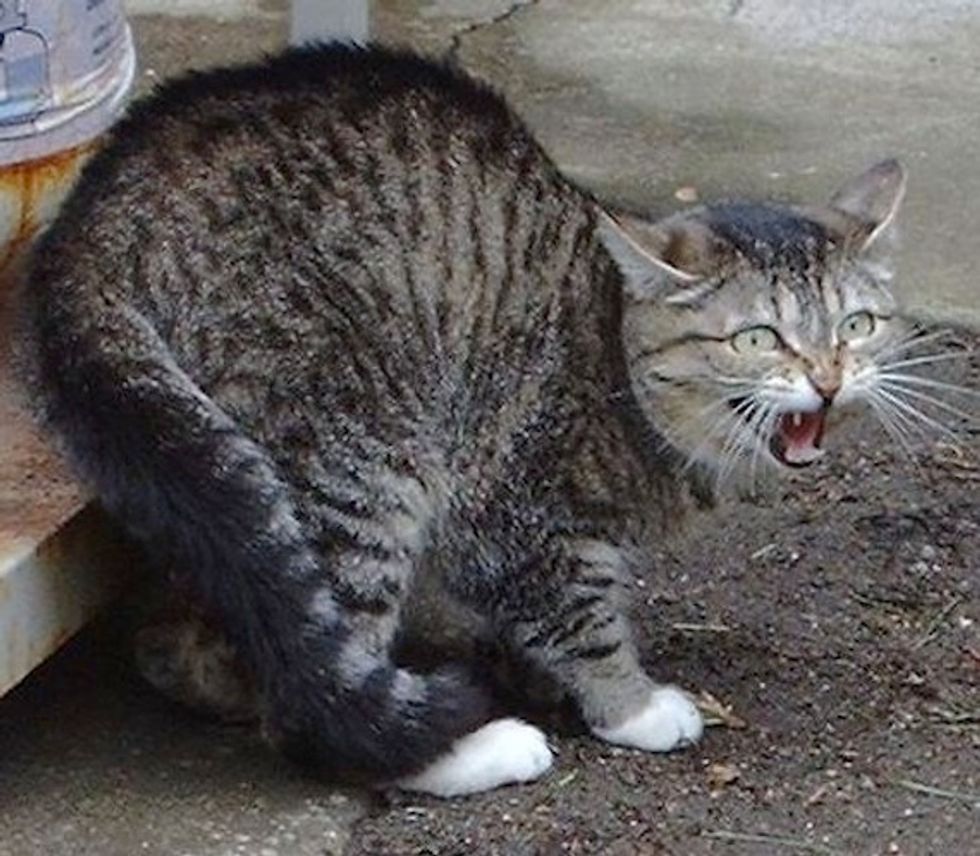Welcome to our weekly 'Ask a Vet from the SF SPCA' feature on 7x7.com. Dr. Jeannine Berger, DVM, DACVB is a board certified veterinary behaviorist who counsels guardians whose pets’ issues are beyond the scope of training. Think of her as a pet shrink…at your service. Ask your own questions in the comments!
Q: I got my six-year-old rescue cat in March of this year. Since I got him, he has been attacking my mom whenever she walks past him. He occasionally bites me too. We are close to returning him to the shelter. Can you help us so that we can keep him?
A: Thank you for your question. Cats bite for many reasons, and first I recommend that you get your cat checked out by a veterinarian to make sure he is healthy and that his biting is not related to physical pain that he is experiencing. Once you’ve determined that the problem is not physical, you could consult a veterinary behaviorist to help you determine what the reason for the attacks is, and design a behavior modification treatment plan.
Aggression towards humans can occur in any cat of any age. Your cat may have what we call “play aggression.” Cats pounce on and bite someone who walks by, a hand dangling over the edge of an armchair, or a foot moved under the bedcovers at night.
Play aggression in cats involves biting and clawing as well as stalking and attacking people, and generally treating people as a cat would treat prey or another cat. The term “play” aggression can be deceiving, as this type of aggression can sometimes be extremely intense, especially if the cat has started to target humans in the household. Play can impact the cat-human relationship in a positive manner. It can lead the cat to associate a regular positive experience with the person. This can increase trust and is especially helpful in relationships where a cat is unsure about a particular person.
Keep in mind that play is important for cats at any age, and the first thing to understand is that to an extent, this playful behavior is natural in all cats, not only in kittens.
In adult cats, not only can playtime ease stress after rehoming it also might improve health, and strengthen the bond between you and your newly adopted cat!
Playtime should simulate a hunting game for your cat. Interactive toys are the best way to play with your cat–they usually feature a fishing pole design, with a toy dangling on the end of a string or wire. Noodles are also popular. With these interactive toys, you can imitate various types of prey–birds, mice, snakes, bugs. Remember to move the toys like prey–as if they were trying to get away from the hunter.
Also provide interactive toys so your cat can play by himself. The most common types are ping pong balls, catnip toys and fuzzy mice. They should be light enough to bat around, because he will have to “bring them to life” by himself. Toys should be mentally stimulating and rotated out regularly to prevent boredom. It is very important whenever you are playing with your cat to use a toy. Never play roughly with a cat, wrestle with it, or move your hands so that the cat chases them. Also never punish your cat for expressing playfulness.



















